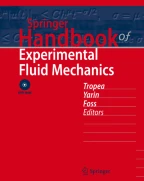
A selected group of common instruments used to measure the atmosphere is described in this chapter. Typical atmospheric measurements include winds, temperature, pressure, humidity, dew point, moisture, radiation, visibility, cloud heights, lightning, gaseous composition, aerosols, and precipitation. Atmospheric sensors may measure at a point (in space) or remotely (with a given distance from the volume of air being measured). As an example of a common wind sensor, sonic anemometers measure wind speed in two or three directions using differences in the propagation speed of sound in different directions across moving air. The surface heat budget, e.g., solar radiation, albedo, the Earthʼs long-wave radiation, heat fluxes into the soil, and latent/sensible heat fluxes are major forcing effects for atmospheric motions. Standard measurement methodologies are presented in Sect. 17.1.3. Some of the most frequently used measuring instruments for atmospheric dispersion are reviewed in Sect. 17.2. Major field experiments have recently used arrays of both bag samplers and fast response sensors to track the dispersion of plumes of trace gases in urban areas. Remote sensing instruments, both active and passive, are becoming increasingly available and robust. Remote sensing instruments may be ground-based or satellite based. While the flexibility and power of modern remote sensing instruments is impressive, there is frequently an inversion challenge associated with data interpretation.
This is a preview of subscription content, log in via an institution to check access.
eBook EUR 352.03 Price includes VAT (France)
Hardcover Book EUR 443.68 Price includes VAT (France)
Tax calculation will be finalised at checkout
Purchases are for personal use only